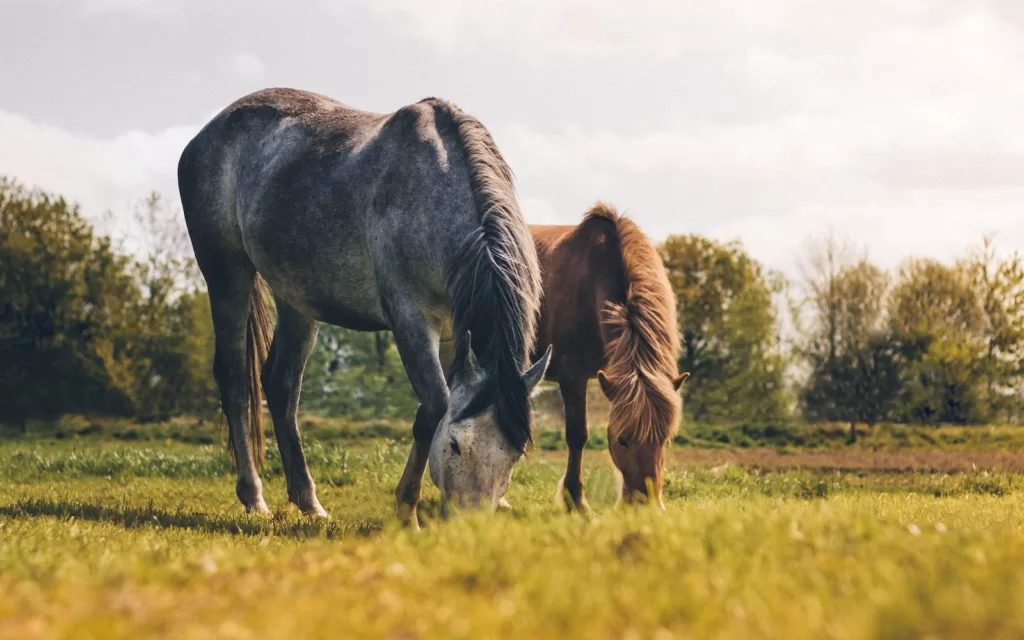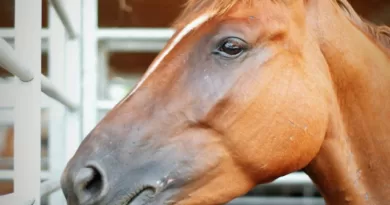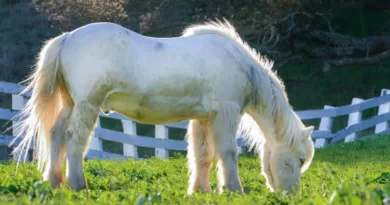Wild Horse Lifespan: Challenges and Hope
Unveiling the Secrets of Wild Horses
Wild horses have long captivated our imaginations, embodying the spirit of freedom and untamed beauty. Their resilience in the face of nature’s challenges is awe-inspiring, but have you ever wondered about their lifespan? In this comprehensive guide, we delve into the world of wild horses, exploring their lifespan, habits, and the challenges they face in the wild.
1. Introduction
Wild horses, often associated with the American West, have roamed our planet for centuries. Their story is one of resilience, adaptability, and survival in some of the harshest environments. In this article, we’ll uncover the mysteries of their lifespan, including factors affecting their longevity and the vital role of conservation efforts.
2. The Unique World of Wild Horses
Wild horses are not a single species but rather a general term used for various breeds that have adapted to life in the wild. These majestic animals have captivated the human imagination for generations. To understand their lifespan, it’s crucial to first comprehend their unique world.
Wild horses can be found in diverse regions, from the vast plains of North America to the rugged terrains of Mongolia. Their ability to thrive in such diverse environments is a testament to their adaptability. In North America, for instance, you’ll find the iconic mustangs, descendants of Spanish horses brought by explorers in the 16th century. In Mongolia, the Przewalski’s horse, a close relative of domestic horses, survives in the harsh Gobi Desert.
3. Factors Affecting Wild Horse Lifespan
The lifespan of wild horses varies depending on several factors. Let’s explore these key elements:
3.1 Genetics
Genetics plays a significant role in determining the lifespan of wild horses. Some breeds have naturally longer lifespans due to their genetic makeup. For example, the Przewalski’s horse, with its ancient lineage, tends to live longer than other wild horse breeds.
3.2 Environment
The environment in which wild horses live can be harsh and unforgiving. Extreme weather conditions, scarcity of food and water, and natural predators are daily challenges they face. Horses in regions with milder climates may have a better chance of survival.
3.3 Predators
Predators such as wolves, cougars, and even humans pose threats to wild horses. Their ability to evade these predators is essential for a long lifespan. In some regions, where predator populations are controlled, horses tend to live longer.
3.4 Human Interference
Sadly, human activities can negatively impact wild horse populations. Encroachment on their habitats, poaching, and capture for domestication can reduce their lifespan. Conservation efforts are crucial to mitigate these threats.
4. FAQ: Common Questions About Wild Horse Lifespan
4.1 How long do wild horses typically live?
Wild horses usually have a lifespan of 15 to 20 years in the wild. This can vary depending on the factors mentioned earlier.
4.2 Are there any wild horse species endangered?
Yes, the Przewalski’s horse is critically endangered. Efforts are underway to protect and preserve this species.
4.3 Do wild horses face any diseases?
Like domestic horses, wild horses can suffer from diseases such as West Nile virus and equine influenza. These diseases can impact their lifespan, making disease management vital.
4.4 How can I support wild horse conservation efforts?
You can support wild horse conservation by donating to organizations dedicated to their protection. Additionally, raising awareness about their importance is invaluable.
5. The Role of Conservation Efforts
Conservation is critical for preserving wild horse populations and ensuring their longevity. Various organizations and government agencies work tirelessly to protect these magnificent creatures. Conservation efforts include habitat restoration, population monitoring, and genetic diversity maintenance. By supporting these initiatives, we can secure the future of wild horses.
6. Wild Horse Lifespan
The wild horse lifespan is a fascinating topic that combines science, nature, and our responsibility for their conservation. Understanding the factors that affect their lifespan and the crucial role of conservation efforts empowers us to make a difference. Let’s continue to celebrate the enduring spirit of wild horses and work together to ensure their future.
7. The Beauty of Wild Horse Behavior
Understanding the Habits and Social Structure
Wild horses, beyond their remarkable lifespan, exhibit fascinating behaviors and live in intricate social structures. To truly appreciate these majestic creatures, it’s essential to delve into their behavioral traits.
7.1 Social Structure
Wild horses are highly social animals. They live in groups called “bands,” typically led by a dominant mare. Within these bands, you’ll find stallions, mares, and their offspring. The social dynamics within these groups are complex and serve as a means of survival.
7.1.1 Leadership
The lead mare is responsible for guiding the group to water sources and grazing areas, ensuring the safety of all members. Stallions play a protective role, defending the band from potential threats.
7.1.2 Communication
Communication within wild horse bands is primarily non-verbal. Moreover, they use body language, vocalizations, and even subtle movements to convey their intentions and emotions. Understanding these communication methods is essential for their survival.
7.2 Mating and Reproduction
Wild horses have a well-defined mating season, typically in the spring and summer. During this time, stallions compete for the attention of mares through dramatic displays of strength and dominance. Mares select their mates, and the successful stallion leads the band.
7.2.1 Foal Development
After a successful mating, mares carry their foals for approximately 11 months. Foals are typically born in the spring, when food is abundant, ensuring the best chances of survival. Foals are on their feet shortly after birth and quickly adapt to life in the wild.
7.3 Foraging and Survival Strategies
Wild horses are herbivores, primarily grazing on grasses and foraging for food. Moreover, their ability to find sustenance in challenging environments is remarkable. Consequently, they often travel great distances in search of water sources and food, showcasing their adaptability.
7.3.1 Water Sources
Access to clean water is essential for the survival of wild horses. Consequently, they often establish well-defined routes to water sources, and this invaluable knowledge is dutifully passed down through generations.
7.3.2 Adaptability
Wild horses exhibit remarkable adaptability to their surroundings; consequently, their diet may vary depending on the region. In more arid environments, they may resort to consuming shrubs and other plants to meet their nutritional needs.
8. The Future of Wild Horses: Challenges and Hope
Ensuring the Survival of This Iconic Species
While the wild horse lifespan is a testament to their resilience, these magnificent creatures face numerous challenges that threaten their existence. It’s essential to be aware of these challenges and the efforts being made to ensure their future.
8.1 Challenges
8.1.1 Habitat Loss
As human populations expand, the natural habitats of wild horses are increasingly encroached upon. Consequently, this leads to a loss of food sources, limited access to water, and a decrease in suitable living spaces for these magnificent creatures.
8.1.2 Competition with Livestock
Wild horses often share their habitat with livestock, leading to competition for resources. Overgrazing and resource depletion can negatively impact both wild horses and other species.
8.1.3 Conservation Conflicts
Balancing the preservation of wild horses with the interests of local communities can lead to conflicts. Finding solutions that benefit both humans and wild horses is an ongoing challenge.
8.2 Conservation Efforts
Efforts are currently underway to address the challenges faced by wild horses. Importantly, these initiatives aim to protect their habitat, by carefully conserving grazing areas, water sources, and breeding grounds. Additionally, they diligently manage populations through measures such as fertility control. Equally significant is their mission to raise awareness about the importance of these magnificent creatures in the ecosystem.
8.2.1 Habitat Protection
Conservationists work to secure and restore habitats for wild horses. This includes preserving grazing areas, water sources, and breeding grounds.
8.2.2 Population Management
Population control measures, such as fertility control, are employed to maintain the health of wild horse herds and prevent overpopulation.
8.2.3 Public Awareness
Educating the public about the value of wild horses in ecosystems and the need for their protection is crucial. Additionally, supporting organizations that champion their cause is one way to contribute to their preservation.

See Also: How long do horses live? Amazing Facts About Horses’ Life
9. Conclusion
The wild horse lifespan is a remarkable journey, replete with challenges and triumphs. Furthermore, gaining insight into the behaviors, social structures, and the conservation efforts surrounding these majestic animals not only enriches our understanding but also fosters a deeper appreciation for their existence. As we move forward, it’s imperative that we continue to support the preservation of wild horses. By doing so, we can ensure that future generations can witness the beauty of these free spirits in the wild.
Enjoyed this article? You May Also Like:
- Learn in 5 minutes about Cryotherapy for Horses
- Penicillin in Horses; Impeccable Guide in 10 minutes
- Excede Antibiotic For Horses, Fantastic Facts in 5 minutes
- The Science of Oxytocin in Horses: How This Hormone Influences Equine Behavior
- Can Horses Swim? Everything You Need To Know About Horse Swimming





